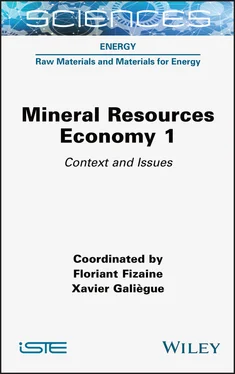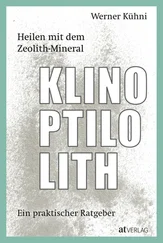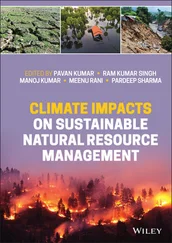While the role of mineral resources in today’s issues is not disputable, they also appear repeatedly in the utopias of our time, particularly that of the circular economy. Therefore, they are also a part of the future considered (fantasized?) by the new thinkers of sustainable development, alongside renewable resources (biomass and renewable energies). The words change according to the context: circular economy, symbiotic economy (Delannoy 2017) or blue economy (Pauli 2011). What these concepts have in common, however, is that they draw on the circularity present in natural ecosystems to ensure the sustainability of human economic systems. In this framework, mineral resources, because they are mostly recyclable, clearly fall within these concepts evoking the intrinsic regeneration of future economic systems .For example, stone paper, a mixture of calcium carbonate and high-density polyethylene is often advanced by Pauli as a practical example of the blue economy (Pauli 2011). This new form of paper does not use water and can theoretically be recycled ad infinitum (no pilot factory for the moment). The symbiotic economy is also inspired by industrial ecology, evoking the “Kalundborg Symbiosis”, the industrial eco-park of a Danish port city where the unwanted byproducts of some manufacturers become inputs for others. Here, again, mineral resources will play a key role as some future activities are expected to continue to mobilize capital, often through the use of metals and other non-metallic resources, as is the case with most mobility solutions, whether or not they fit into the economy of sharing or functionality.
Mineral resources have played a major role in many periods of human history and will certainly continue to accompany it in its development. Made use of in the fight against global warming, the energy transition and the switch to renewable energies are, nevertheless, raising new questions in the scientific community. Indeed, increasingly important evidence seems to confirm the existence of a growing relationship between the consumption of mineral resources and the development of renewable energy.
I.1. Should we fear a new mineral jump caused by the decarbonation of energy?
To our knowledge, the first study to have reported on this hypothesis is that of Lund (2007), a material intensity analysis of the different electric production technologies. Later, other general studies confirmed this hypothesis (Kleijn et al. 2011; Phihl et al. 2012; Ashby 2013; Elshkaki and Graedel 2013; Vidal et al. 2013). At the same time, other analyses have also raised the greater sensitivity of green energy to specific categories of mineral resources like rare metals (Yang 2009; Kleijn and Van der Voet 2010; Elshkaki and Graedel 2013; Fizaine 2013; Moss et al. 2013). Generally speaking, these scientists highlight the greater consumption of materials and metals caused by the use of green energy and also more broadly by decarbonated energy (we thus compare fossil fuels without CO 2capture and sequestration and fossil fuels with CO 2capture and sequestration). This means that, with constant electricity production, the shift towards a greener electricity mix should lead us to consume more metals (and mineral resources).
For example, the latest study to date, that of BRGM (Boubault 2018), sheds an interesting light on the material footprint of electricity production systems. Through a lifecycle analysis, and in contrast to previous studies, it shows that fossil fuel-based electricity production systems are more intensive in raw materials per kWh, on the one hand because they consume large amounts of fossil fuels and also because of the mining waste generated to access these fossil resources. Figure I.1shows the material footprint of electrical systems in decreasing order of CO 2equivalent emissions. If we focus on the material footprint, the energy transition appears to be consistent with a policy of resource conservation. Coal is far ahead at more than 2,715 kg/kWh compared to only 0.036 kg/kWh for hydropower. Renewable energies continue to consume fossil fuels for their construction but in much smaller proportions than fossil fuel-based electrical systems. A more specific analysis of the metal footprint reveals a much less clear general pattern ( Figure I.2). Here, geothermal energy, followed by wind and concentrated solar power, now appear to be the highest in metal consumption.
Conversely, other renewable energies, such as photovoltaic energy and biomass, and hydropower even more so, do as well as nuclear or fossil fuels. If we follow the results of this study, the metal footprint of the electrical system would not necessarily increase in case of decarbonation; it would all depend on the precise content of the energy transition and in particular the respective shares of each of the renewable energies. An even finer analysis by metal leads to even more disparate rankings ( Figure I.3). Thus, Figure I.3shows the share of metal consumption of the electrical system absorbed by each type of technology. Three main conclusions can be drawn from observing these results. Firstly, what is obvious is the significance of photovoltaics, which concentrates an important part of the consumption of several minor metals (tantalum, gallium, indium, strontium) and also of some major metals (aluminum, copper, zinc and lead). Secondly, nuclear power monopolizes a much more limited range of metals and also plays a major role (uranium, platinum, lithium, titanium oxide, chromium, nickel). Thirdly, the consumption of wind power, also significant, remains rather concentrated on major metals (iron, copper, manganese, nickel, chromium). As things stand, other forms of electricity production consume smaller quantities of metals. This study concludes that the shift to a “clean” mix, as described in the International Energy Agency’s World Energy Outlook , should, at a constant amount of electricity produced, increase the electrical system’s consumption of iron by 23%, copper by 242%, silver by 633% and tellurium by a factor of 10. Of course, these results must be put into perspective, particularly because we do not take into account the importance of the production of these metals and the potential for production increases, since the current consumption of the electrical system plays a minor role in the consumption of most metals.
Of course, these studies also bring with them other areas of shadow, on the one hand because they often reason in isolation; that is, they consider only the material necessary for the manufacture of the wind turbine but not necessarily the mining waste brought by the extraction of the neodymium incorporated in the permanent magnets of the latter (except for this last study). On the other hand, the environment is often excluded from the electrical production system. So, what about the material footprint of the connection of offshore wind turbines and back-up, smart-grid or storage solutions necessary for intermittent renewable energies to perfectly replace fossil fuels? In the same vein, these studies often ignore the intra-technological complexity of power generation systems by considering only large groups (onshore wind, offshore wind, photovoltaics, etc.), whereas there is a significant intratechnological variability in the material footprint, especially for certain specific metals. It may be added that while the share of electricity in the energy mix is expected to increase in the future, metals used in the energy sector are not limited to the production of electricity alone, but also concern other sectors of energy production or use, which themselves consume metals (LEDs, batteries, electric vehicles, etc.). Finally, reasoning in partial equilibrium, ignoring other sectors, induces large blind spots, for example by ignoring the conflicts of use between the digital and energy sectors for metals such as cobalt and lithium (electrochemical batteries) and also indium and gallium (flat screens, printed circuit boards and thin-film PVs).
Читать дальше












